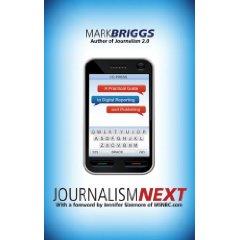A blog is an important tool for a young journalist. Many working journalists have blogs on top of their traditional stories, so it can’t hurt to start early. This chapter gives advice for starting and maintaining a good blog.
The three characteristics of a blog are:
- A frequently updated website that displays entries in reverse chronological order.
- Each entry, or post, has a headline and a body. Many contain links, pictures or video.
- Contains a place for readers to leave comments, although some blogs leave this part out.
Blogs make it possible for anyone to publish stories or information and share their thoughts and ideas on different subjects. They have helped journalism to become more immediate and interactive. Stories can be easily published as soon as possible without having to go through an editor. However, this increases the importance of self editing.
Before you start a blog, you should read a few to get familiar with the style. It is also important to get aquainted with the terminology:
- Post — entry on a blog.
- Permalink — a link on each post that directs readers back to the post, helpful for people emailing links to your blog.
- Trackback — lets bloggers know when others are linking to their material.
- Blogroll — a list of sites the blogger frequently visits that is located on the sidebar of the blog. Helpful for readers.
Making a blog is easy if you have a plan. Decide on a name, a description and what to write about. Blogger.com and WordPress.com are the two sites the book reccomends, although there are other options. After you have a name, it is time to pick a theme. Blogger and WordPress have their advantages when it comes to themes, so decide which is better for you.
Once you have a blog, you need to get readers. It is important to write quality attention-grabbing headlines, publish quality posts regularly and becomes active in the blogging community. Nothing bad can happen from commenting on other blogs and it might just get you a few new readers. You should also make an effort to update your blog daily.
There are a few things that can be done to make your blog more appealing to readers. It is good to have a specific topic so that your blog becomes a dependable source within the chosen topic. Posts should be scanable and include links and pictures. An RSS Feed is also a useful tool to include on the sidebar of your blog.



 Entries (RSS)
Entries (RSS)